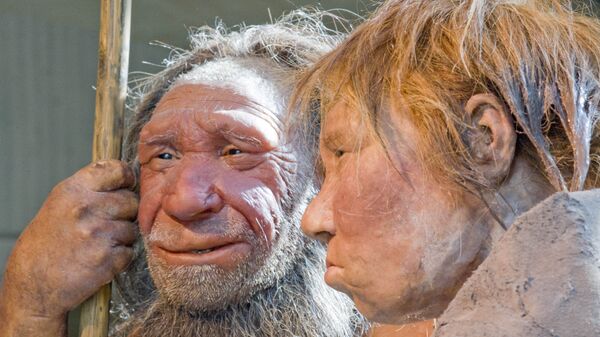The teeth and bones had been modified by the hands of a close human relative. Stone hammers and anvils were also discovered at the scene. The Cerutti Mastodon site is named for its discoverer, paleontologist Richard Cerutti with the San Diego Natural History Museum (The Nat).
The remains "show clear signs of having been deliberately broken by humans with manual dexterity," according to study lead Steve Holen, director of research at the Center for American Paleolithic Research.
Before this discovery, the earliest confirmed passage of ancient hominids onto the American supercontinent took place about 15,000 years ago. It is thought that humans crossed into the Americas via the Bering Land Bridge that once connected Siberia and Alaska, which is now underwater.
But if that was the case, then how did a tool-using species make their way to California 115 millennia before everyone else? The researchers have excluded the hominids at the Cerutti Mastodon site from being homo sapiens, as 130,000 years ago humans had yet to leave Africa.
It was a human relative, then, one of the many extinct hominin species. Most likely it would be one of the species that roamed Eurasia in this time period, such as Homo erectus (a predecessor and possibly ancestor to humans,) Neanderthals (our stubby, clothes-wearing cousins who went extinct 28,000 years ago,) or even a lesser-known species such as the Denisovans (with only a few samples known to scientists, but whose DNA still exists in Australian aborigines.)
Unlike the humans who crossed the land bridge, Holen believes that the Cerutti Mastodon hominins sailed across the Pacific Ocean. Since no other evidence of these hominins has been found, Holen's team conjectures that they died out and left behind no genetic traces.
The remains were discovered in 1992 by construction workers expanding a freeway, but existing technology was not sufficient to radiometrically date the mastodon bones. Scientists including co-author James Paces with the US Geological Survey were able to date the bones in 2014 by measuring trace amounts of uranium in the bones.
"Since the original discovery, dating technology has advanced to enable us to confirm with further certainty that early humans were here significantly earlier than commonly accepted," said co-author and The Nat paleontologist Thomas Demere.
Tool use has been traced back to 3.4 million BC by our distant ancestor, the bipedal Australopithecus. "This is a very old technology," said Holen. "We have people in Africa 1.5 million years ago breaking up elephant limb bones in this pattern, and as humans moved out of Africa and across the world they took this type of technology with them."




